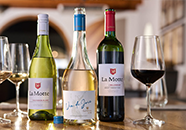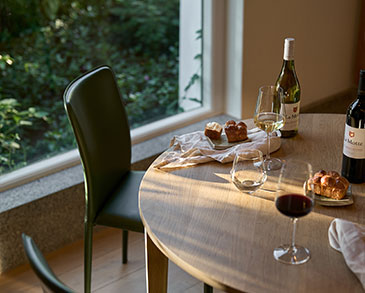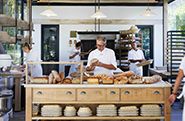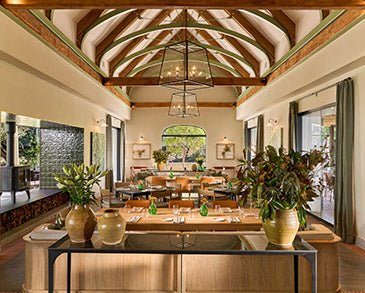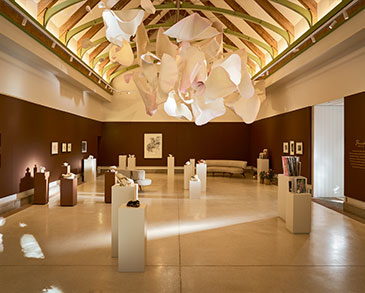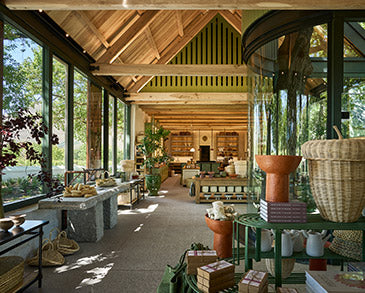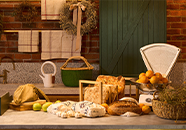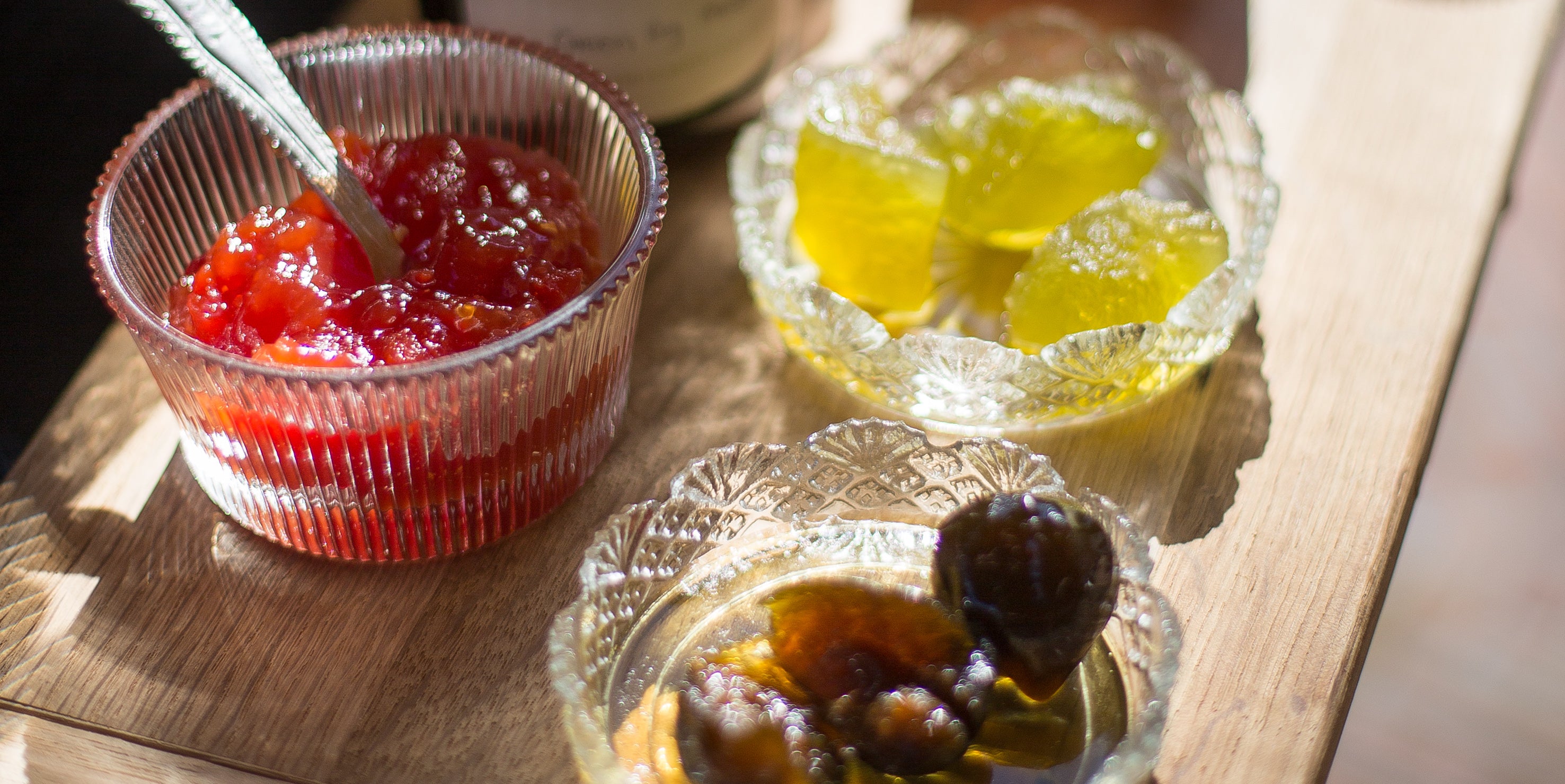
Being seasonal and sustainable is very fashionable – and with good reason. But there truly is nothing new under the sun. In the early days of the Cape, seasonality and sustainability were of the utmost importance and in fact, these culinary traditions still reflect in the way we go about food in the Cape Winelands today.
One such tradition is the preservation of fruit. Although the preservation of fresh produce was not exclusive to the French, many of the traditions established at the Cape - and especially the Franschhoek Valley - had a French origin.
Already in the time of Jan van Riebeeck, French chef, La Varenne, published a cookbook (1651) sharing recipes for jam and confiture using a variety of fruit such as cherries, quince, apricots, plums, peaches and green walnuts. These recipes covered the various techniques – from whole pieces of fruit to jelly, smooth jams, runny jams and syrups.
Well-known food historian and La Motte Culinary Consultant, Hetta van Deventer-Terblanche, says that prior to the arrival of the French Huguenots at the Cape, the Dutch already had the habit of serving confiture after lunch. Coming from a fruit-producing country, the Huguenots did, however, make a significant contribution with their knowledge of preserves, jams and confiture. They also had exceptional skill when it came to cooking with grapes and producing must syrup.
Before the French established fruit orchids, predominantly green walnuts, turnips, quince and gherkins were preserved at the Cape. The later availability of a wider selection of fresh fruit encouraged its extensive use in confectionery and also as part of savoury meals – from there the typical South African culinary tradition of having a sweetish element such as cooked apples or quince on the plate. Preserving the excess for winter was, however, also a priority and fruit was bottled and kept in the form of jams, jellies, confiture and chutneys.
The French influence is also clear in the Afrikaans terminology used to describe the various processes of preservation. It was customary at the Cape to serve whole pieces of fruit, beautifully presented in dainty dishes with tea or coffee. This fruit, called konserf in Afrikaans, is directly from the French conserve, which means canned. The French verb confire, meaning “to preserve”, also translates as confiture or the Afrikaans konfituur.
Hetta shares some other interesting facts:

- I grew up in the Overberg where we believed that green figs had to be preserved before October 15, or they would be hollow in the middle... Green figs had to be cooked in a copper pot to ensure a good green colour and rumour had it that some housewives even added copper sulfate (blouvitrioel)...
- Thought foraging was a new trend? Of course not! Food from the veld, such as sour figs (suurvytjies) also ended up in jams.
- With limited resources, the new farmers at the Cape had to be innovative. The nectar of the Protea repens flower (sugar bush) was used to make syrup and when the first vineyard came into production, brandy was distilled. That was followed by the well-known brandy-preserved grapes, called Kaapsejongens (translated as young men from the Cape) and brandy-preserved small apricots, called Boeremeisies (translated as farm girls).
- Before the use of glass jars – not to mention sterilised jars! - animal bladders were used to seal pottery and clay containers.
- Quince has always been a favourite when it comes to preservation. In the time of the Pharaohs of Egypt already, quince was preserved with honey. (Although cane sugar has been known to mankind for millennia, in the West it has only been used in its current, refined form and as a commercial commodity since the 16th century.) Quince was also popular at the Cape and in Europe. Quince marmalade used to be similar to jam and it often ended up as a sweet treat, similar to today’s pâte de fruit.
- Click here for Food24's explanation of the difference between jam, conserve, confiture, preserve and chutney.
Inspired to do some preserving of your own? Here are some tips from the Pierneef à La Motte kitchen:
- Fruit Jelly: Fruit jelly is not made with gelatin, but with the fruit’s own pectin. Lemon juice can be added to better the quality of the pectin, so keep that in mind if your jelly doesn't want to set. Add some lemon juice and cook it again. To ensure a lovely clear jelly, first filter the lemon juice and jelly through a muslin cloth. Choose fruit that is not too green or too ripe. When it is perfect for eating, it is perfect to preserve.
- Marmalade: Ensure that the strips of citrus have been cooked until very soft before you put them in the sugar syrup, otherwise they will not soften.
- Chalk: When you have to soak fruit such as makataan (wild melon) overnight in chalk water, use 2 tablespoons chalk on 4.5 litres of water. The fruit has to be properly covered by the chalk water – use a weight to push it down. The chalk water adds a lovely crunch to the makataan.
- Sterilise bottles and lids.
- To test fruit such as apples and pears, pierce them with a match stick – the stick should enter easily although the fruit should not be too soft.
- To prevent fruit such as quince, pears and apples from discolouring while being peeled, put the peeled fruit in meek salt water.
- A squeeze of lemon juice works well with very sweet fruit jam such as ripe fig jam or peach jam.
- Fruit and sugar should never come to the boil before all the sugar has melted, otherwise the sugar will form hard crystals.

